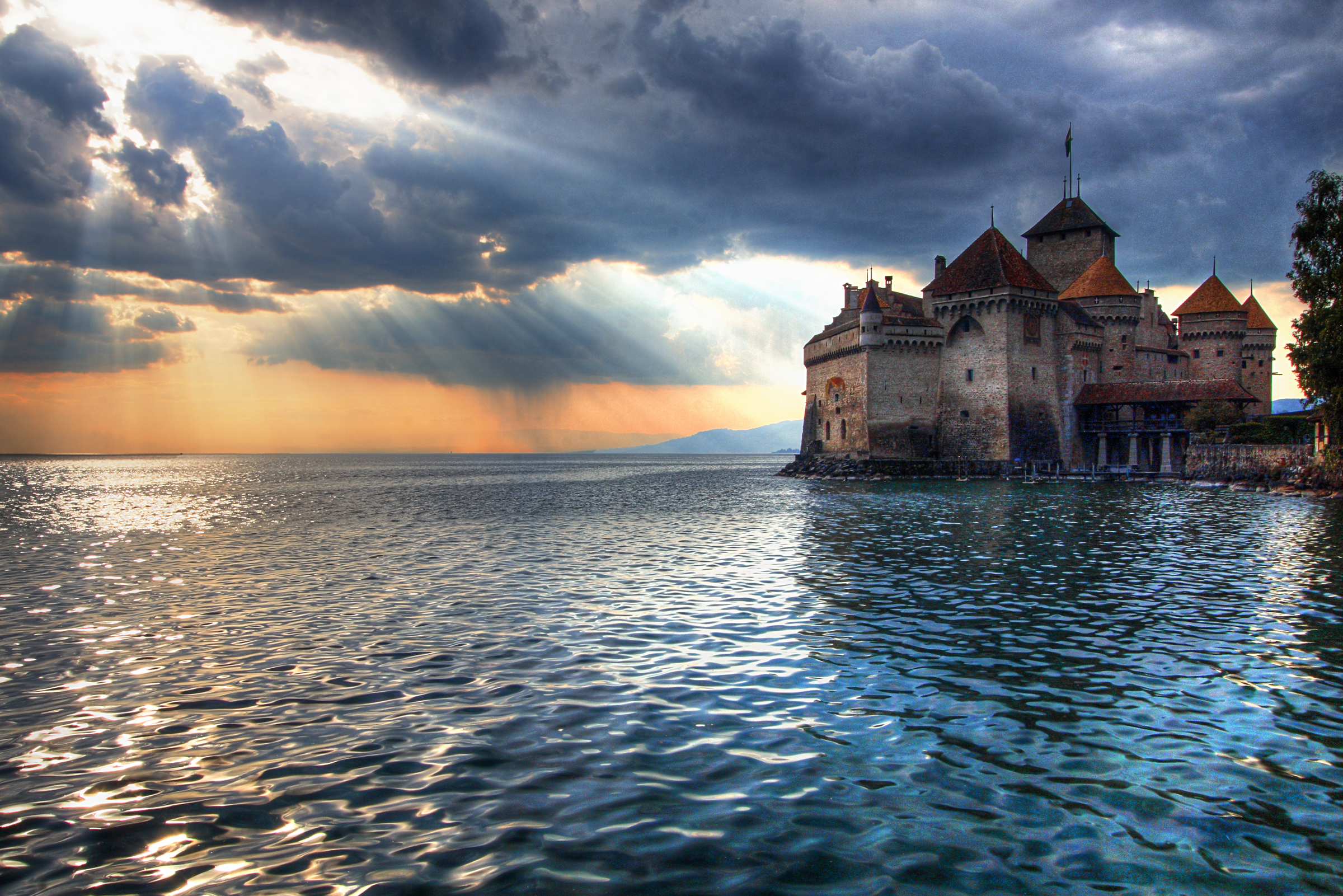Chillon Castle (France: Château de Chillon) is located on the
shore of Lake Geneva in the commune of Veytaux, at the eastern end of the lake,
3 km from Montreux, Switzerland. The castle consists of 100 independent
buildings that were gradually connected to become the building as it stands
now.
The first written
record of the castle is in 1160 or 1005, although, according to some sources,
the first fortification on the site of the present Chillon Castle was built
around the 9th century. Its goal was to protect the road running from Avenches
to Italy through the pass Grand-Saint-Bernard along Lake Geneva.
 |
| This is a file from Wikimedia Commons, Author Bolla Ugo, License |
In 1150, Chillon
Castle, the property of the Bishop of Sion, which he expanded, becomes home
Counts of Savoy. Counts originated from the region Savoy in France. Counts
originated from the region Savoy (Savoy) in France. Over time, they became the
rulers of almost the whole Italy, but their influence was more due to political
intrigues and successful weddings than due to military success.
In 1230 Thomas I of
Savoy (Thomas Ier de Savoie) moved his residence to Chillon. In 1253, Pierre II
of Savoy (Pierre II Comte de Savoie, 1203-1268) became the owner of Chillon
Castle. During his reign, the architect Pierre Meunier (Pierre Mainier) spent
restructuring Chillon and the castle acquired its present size and type. Active
restructuring of the castle lasted until the 15th century. It was during this
period were built the main structures that shaped the historical appearance of
the castle.
|
Name:
Chillon
Castle
Location:
Veytaux municipality
Region:
Riviera-Pays-d'Enhaut
Country:
Switzerland
Type:
Gothic
Material:
Sandstone
Start of construction: 9th century
Condition: opened
to the public
Website: www.chillon.ch |
Depth of the lake made
a surprise attack on that side unlikely. In the center of the complex stands 25
meters high main tower, the other watch towers are located on a circle.
Architectural jewel of the castle is a chapel with a painting of the XIV
century, one of the few religious buildings that escaped the destruction of the
reformers. Each room of Chillon castle reveals its part of the history of the
castle: here and pompous reception halls for celebrations with giant
fireplaces, living rooms and a complex of living rooms of princes and counts,
and many auxiliary and prison facilities in the basement.
 |
| This photo of Chateau de Chillon is courtesy of TripAdvisor |
The most famous
prisoner of the castle was the prior of the monastery of St. Victor in Geneva François
de Bonivard (1493-1570), a supporter of the Reformation, and the enemy of the
Counts of Savoy which were the adherents of the Catholic Church. In 1532, on
the orders of Charles III, Count of Savoy (1486-1553), Bonivar was thrown into
a dungeon of Chillon Castle and spent "without charge or trial" for
four years, chained to a post.
March 29, 1536 after a
two-day siege the castle was taken by
the Bern's protestants, and Bonivare was released. The priest survived many of
his associates, who were executed or died, unable to endure the torture of
hunger and deprivation. Jailers threw their bodies into the lake through
special loopholes in the walls.
In the summer of 1816,
Lord George Gordon Byron (1788-1824) heard the story of Bonivare, visited the
castle and, shocked by what he saw, wrote the poem "The Prisoner Of
Chillon" (1816). This contributed to the
Chillon Castle has become one of most popular attractions in Switzerland. Byron also started the
curious tradition: he carved his name on a pillar in the dungeon.
As soon as St.
Bernarskyy mountain pass began to give way in importance to St. Gotthard mountain
pass, located east Shilona, the importance of the castle, as a defensive
building, gradually fell, and it was often used only as a place of
imprisonment.
In 1835, Chillon Castle
converted into a warehouse cannons for that were expanded the aisles and
demolished some parts of the walls.
In 1844 one of the
floors of the castle was given as a prison for political prisoners. In the
castle, were upgraded rooms to bring them in line with modern standards.
In 1887, was created
the "Association du Château de Chillon". Through the efforts of the
Association and the Canton of Vaud castle was restored and became a museum and the example of an impregnable fortress of
the Middle Ages.
In 1891, the castle
gets the status of "Monument Historique".
 |
| This is a file from www.flickr.com, Author: Eric Hill, License |
Chillon is currently
open to the public for visits and tours. According to the castle website,
Chillon is listed as "Switzerland's most visited historic monument". Many
famous writers from around the world have visited Chillon and left their
autographs in the castle. Already in the
beginning of 19th century it happened every year about 100,000 visitors in the castle. From the 14th century, castle
practically unchanged and continues to delight all visitors with its medieval
architecture.
In the preparation of this
article, were mainly used materials of websites: www.wikipedia.org, www.chillon.ch/en/,

No comments:
Post a Comment